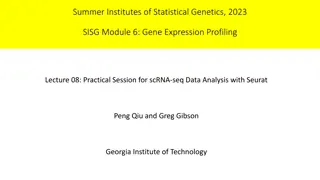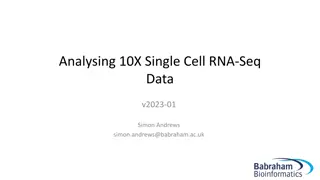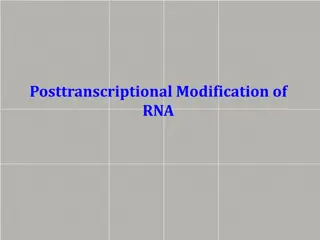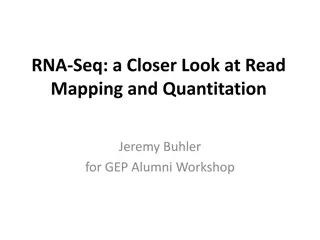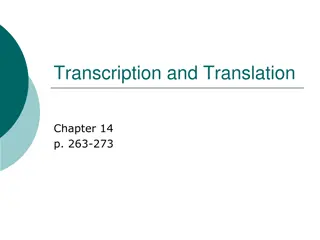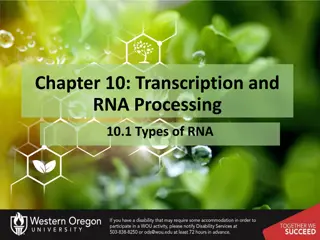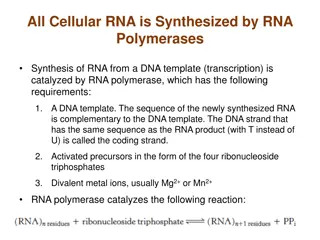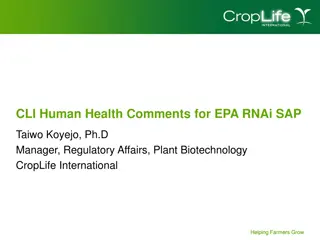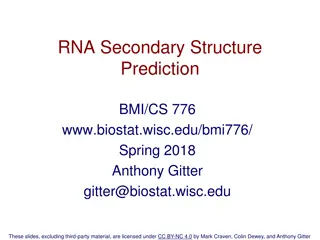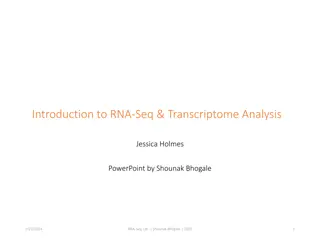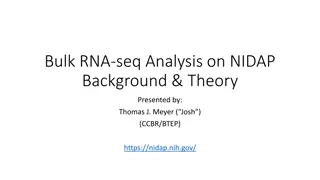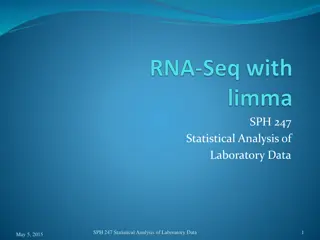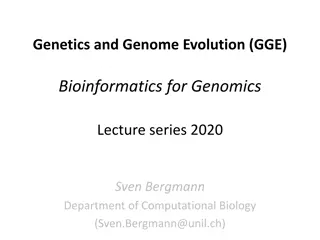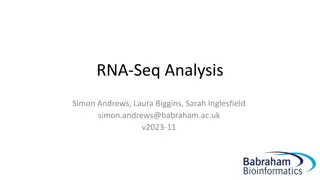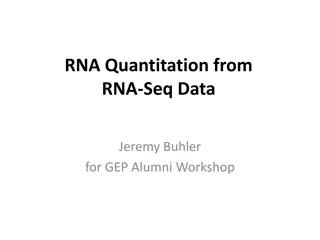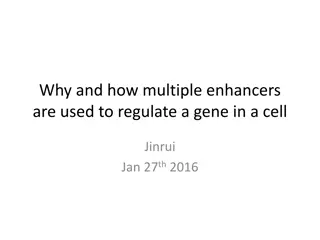Understanding 10X Single-Cell RNA-Seq Data Analysis
Explore the intricacies of analyzing 10X Single-Cell RNA-Seq data, from how the technology works to using tools like CellRanger, Loupe Cell Browser, and Seurat in R. Learn about the process of generating barcode counts, mapping, filtering, quality control, and quantitation of libraries. Dive into dimensionality reduction techniques like PCA and tSNE, as well as clustering methods such as K-means and Graph-Based. Uncover the power of the 10X Software Suite in visualizing and analyzing single-cell data.
Download Presentation

Please find below an Image/Link to download the presentation.
The content on the website is provided AS IS for your information and personal use only. It may not be sold, licensed, or shared on other websites without obtaining consent from the author. Download presentation by click this link. If you encounter any issues during the download, it is possible that the publisher has removed the file from their server.
E N D
Presentation Transcript
Analysing 10X Single Cell RNA-Seq Data v2019-06 Simon Andrews simon.andrews@babraham.ac.uk
Course Outline How 10X single cell RNA-Seq works Evaluating CellRanger QC [Exercise] Looking at CellRanger QC reports Dimensionality Reduction (PCA and tSNE) [Exercise] Using the Loupe cell browser [Exercise] Analysing data in R using Seurat
How 10X RNA-Seq Works RT Oil Reagents Cells Barcoded Beads Gel Beads in Emulsion (GEMs)
How 10X RNA-Seq Works Oligo dT Cell barcode (same within GEM) UMI (all different) Priming site
How 10X RNA-Seq Works AAAAAGATTCGTAGTGCTGATGCT... Reverse Transcription Mix RNAs and Cells Oligo dT Cell barcode (same within GEM) UMI (all different) Priming site Illumina Library Prep
How 10X RNA-Seq Works Read 1 Read 3 Illumina Adapter Cell Illumina Adapter Sample Barcode UMI 3 RNA Insert Barcode Read 2 Sample level barcode same for all cells and RNAs in a library Cell level barcode (16bp) same for all RNAs in a cell UMI (10bp) unique for one RNA in one cell
10X Produces Barcode Counts Sample WT Sample KO Cell WT B Cell WT C Cell KO B Cell KO C Cell WT A Cell KO A UMI UMI UMI UMI UMI UMI UMI UMI UMI UMI UMI UMI UMI UMI UMI UMI UMI UMI UMI UMI UMI UMI UMI UMI UMI UMI UMI UMI UMI UMI UMI UMI UMI UMI UMI UMI UMI UMIs are finally related to genes to get per-gene counts
The 10X Software Suite Chromium Controller Cell Ranger Loupe Browser Runs the chromium system for creating GEMs Pipeline for mapping, filtering, QC and quantitation of libraries Desktop software for visualisation and analysis of single cell data.
Cell Ranger Barcode Extraction and filtering Identifies cell level barcodes Mapping to reference Uses STAR aligner Generate count table UMIs per gene in each cell Dimensionality Reduction PCA and tSNE Clustering K-means and Graph Based
CellRanger Commands I1 scrALI001_S1_L001_I1_001.fastq.gz scrALI001_S1_L001_R1_001.fastq.gz scrALI001_S1_L001_R2_001.fastq.gz Index file. All identical (or one of 4) at Babraham R1 Barcode reads 16bp cell level barcode 10bp UMI R2 3 RNA-seq read
CellRanger Commands CellRanger Count (quantitates a single run) $ cellranger count --id=COURSE \ --transcriptome=/bi/apps/cellranger/references/GRCh38/ \ --fastqs=/bi/home/andrewss/10X/ \ --localcores=8 \ --localmem=32 CellRanger aggr (merges multiple runs) $ cellranger aggr --id=MERGED \ --csv=merge_me.csv \ --normalize=mapped
Output files generated web_summary.html - Web format QC report filtered_features_bc_matrix barcodes.tsv.gz - cell level barcodes seen in this sample features.tsv.gz - list of quantitated features (usually Ensembl genes) matrix.mtx.gz - (sparse) matrix of counts for cells and features possorted_genome_bam.bam - BAM file of mapped reads molecule_info.h5 Details of the cell barcodes used for merging cloupe.cloupe - Analysis data for Loupe Cell browser
Evaluating CellRanger Output Look at barcode splitting report Check sample level barcodes Look at web_summary.html file Check number of cells Check quality of data Check coverage per cell Check library diversity
Sample Level Barcodes Only present if multiple libraries mixed in a lane Get standard barcode split report, but with 4 barcodes used per sample Even coverage within and between libraries
CellRanger Reports HTML report comes with each sample and aggregated group of samples Gives some basic metrics to judge the quality of the samples and spot any issues in the data or processing
How many cells do you have? Cell number is determined from the number of cell barcodes with reasonable numbers of observations Need to separate signal from background real cell associated barcodes vs noise from empty GEMs and mis-called sequences Changing the thresholds used can give very different predictions for cell numbers
How many cells do you have? Start by looking at the quality of the base calls in the barcodes Bad calls will lead to inaccurate cell assignments
How many cells do you have? Start by looking at the quality of the base calls in the barcodes Bad calls will lead to inaccurate cell assignments
How many cells do you have Plot of UMIs (reads) per cell vs number of cells Blue region was called as valid cells Grey region is considered noise Both axes are log scale!!!
How many cells do you have 5000 reads per cell. 10k cells 500 reads per cell. 15k cells CellRanger v3 uses a liberal cutoff to define cells. This was designed to accommodate (normally cancer) samples where cells might have wildly different amounts of RNA. It will include large numbers of cells with small numbers of UMIs. If this doesn t apply to your sample then this will over-predict valid cells.
How much data do you have per cell? Reads should map well Check reads are mostly in transcripts Means and medians can be misleading when cells are variable
How much data do you have per cell? Some details about mapping Reads should map to the 3 end of transcripts (oligo dT selection) Reads count as exonic if 50% of them overlaps an exon Multi-mapped reads which only hit one exon are considered to be uniquely mapped Reads associate with genes based on overlap and direction Only confident (unique) transcriptome reads are used for analysis
How much data do you have per cell? Difficult to generalise how much data to create/expect Depends on cell type, genome and other factors In general though, sensible numbers would be: Reads per cell ~10,000 Genes per cell 2000 - 3000
Exercise Evaluating CellRanger Reports Look at the selection of CellRanger reports to get an idea for the metrics they provide The data we re going to use for the rest of the day is in course_web_summary.html , do you see any problems which would concern us with this data at this stage?
Course Data CellRanger QC Actual Problem Value Reported



